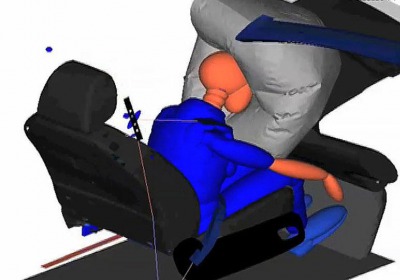Ford is developing a virtual child to improve safety research
Thu, 31 Mar 2011Researchers at Ford have started constructing a "virtual" six-year-old child that will help them research future safety devices.
It will take years to build the complex, multilayer digital dummy, Ford said on Thursday. And the finished computer model won't be used for vehicle validation or crash testing.
Over the past decade, Ford and other automakers have increased their use of computerized crash tests to help develop new vehicles. The computer tests have become more sophisticated and let automakers cut costs by reducing the number of actual prototypes needed for crash tests.
Ford spent 11 years constructing a virtual adult crash-test dummy. It has been used to help develop current safety systems, Ford said.
Development of the child dummy should take less time than the adult version. The gender is yet to be determined. But it does make a difference because of muscular development.
Ford says six years old is important because younger children don't interact with safety belts while riding in restraints such as car seats.
Ford researcher Steve Rouhana explained that children's bodies respond differently in a crash, so safety systems designed for adults may not work as well to protect them.
A child's head, for instance, is much larger in proportion to the rest of the body than an adult's and is therefore more difficult to restrain on impact. Neck muscles and bones are not as well-developed. That flexibility ups the risk of injury.
Children should be seated in booster seats until roughly age 11, Rouhana said. Too many parents move to the adult belt early and children don't use a booster seat as long as they should, he added.
Taking that into account, Ford hopes the new rear inflatable seatbelt it launched in the redesigned Ford Explorer this year will work better for younger passengers.
When the new belts inflate in a crash, the impact force is spread over five times more surface area on the chest compared with a traditional seat belt.
Ford expects the digital child to further refine safety systems such as the inflatable belts.
By Michelle Koueiter

